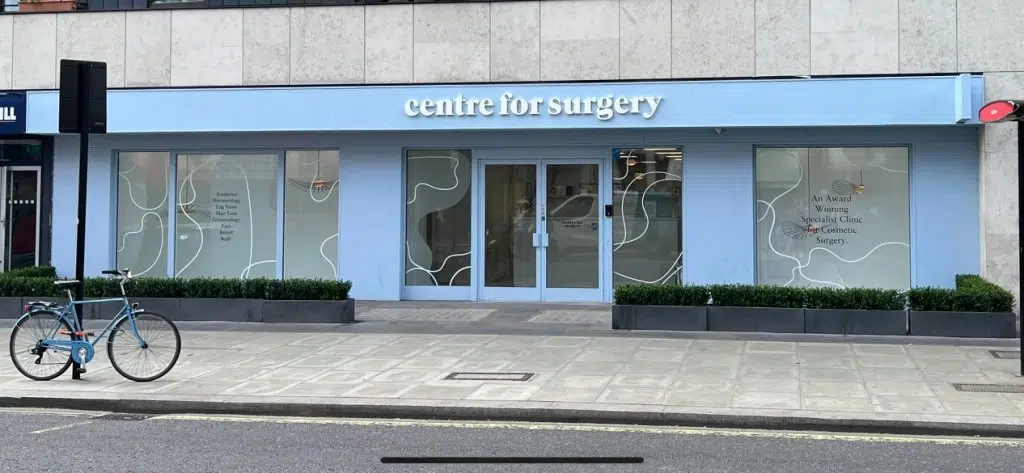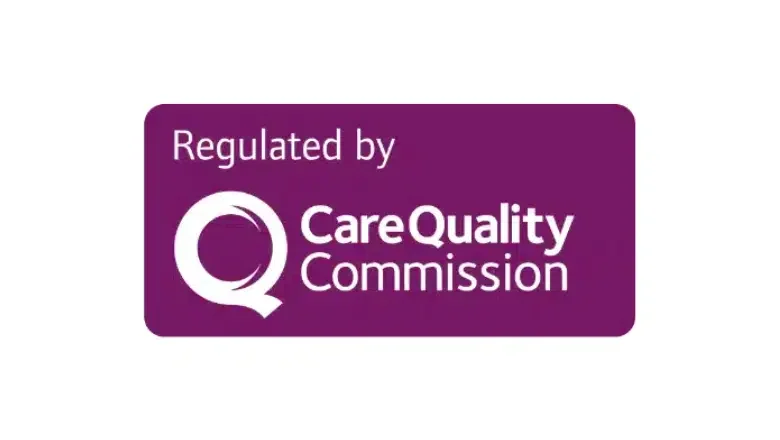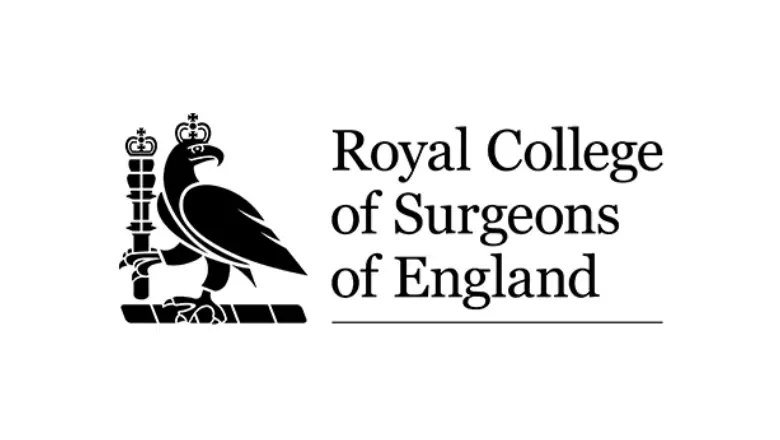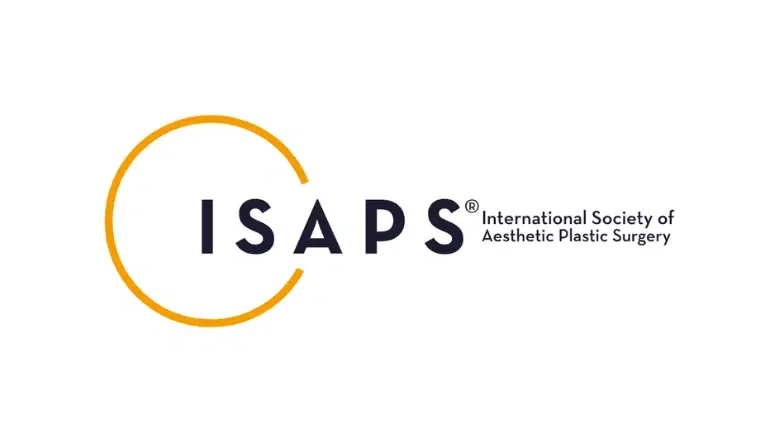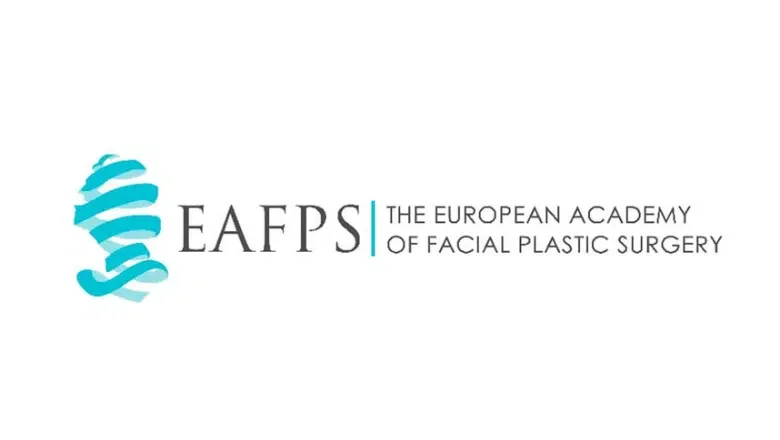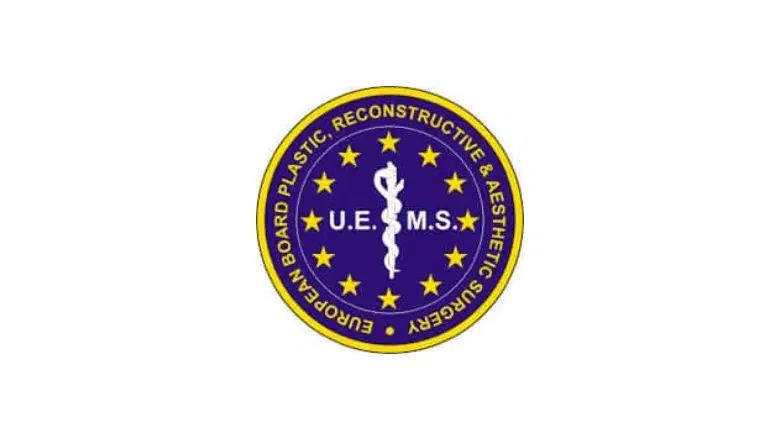Turbinate Reduction Surgery in London
Turbinoplasty is a highly effective surgical method that significantly enhances the functionality of the nasal passages, primarily by facilitating more straightforward and more effortless respiration. This nose surgery can provide significant relief to individuals suffering from a range of conditions. These conditions could range from general breathing problems caused by an obstructed airway to specific complications arising from prior nose reshaping procedures, also known as rhinoplasty.
RELATED: Breathing Better: How Septoplasty and Turbinate Reduction Can Help
Our seasoned team of surgeons is renowned for expertise and proficiency in the field of nasal procedures. Each of our skilled surgeons has been involved in an impressive number of nose surgeries, numbering in the hundreds, right here in the UK.
Through their extensive experience, our surgeons have refined their skills to such an extent that they are well-equipped to handle any situation, from straightforward cases to the most complex ones. Their breadth of knowledge and practical experience ensure that patients are in the safest hands for their procedures.
We are committed not only to meeting but also to exceeding our patients’ expectations by providing top-tier treatment and care. Regardless of the nature or severity of your nasal issues, you can rest assured that our expert team will provide the best possible solution tailored specifically to your needs.
What is Turbinoplasty and Turbinectomy?
Turbinates, also known as nasal conchae, are intricate bony structures that line the interior portion of your nasal cavity. These formations play a crucial role in your respiratory system. They work by facilitating the warming, filtering, and humidification of air that travels into your nasal passage. Your nasal cavity is segmented into four separate air channels by three pairs of these turbinates, which subsequently lead to the sinuses tucked behind each cheekbone. The most substantial pair, referred to as the inferior turbinates, are larger than the other pairs because they bear the majority of the task of air filtration when you breathe through your nose. These turbinates are encapsulated in a skin that secretes mucus, which assists in heating and humidifying the air as it journeys through the nose. They also serve as filters, capturing dust and other fine particles before they can infiltrate your bronchus.
RELATED: Can Nose Surgery Treat Nose Allergies?
However, there can be instances where the turbinates enlarge to a degree that obstructs the free flow of air through your nose. This growth is typically harmless but necessitates removal to restore unimpeded breathing. Over time, the blockage in the nasal passage can become severe, causing snoring and, in more acute instances, sleep apnoea. While it’s true that some individuals naturally have larger turbinates, it is observed that a high proportion of sleep apnoea patients possess overly large turbinates. An enlarged turbinate can also cause difficulties in breathing, even while awake.
Turbinectomy is a surgical technique that involves the extraction of turbinates. This procedure can be partial or complete, primarily targeting the removal of the inferior turbinate. It is considered more drastic than turbinate reduction surgery, also known as urbinoplasty.
In contrast, Turbinoplasty is a slightly less invasive procedure where the size of the turbinates is reduced rather than completely removed. The goal of both procedures is to alleviate symptoms caused by the enlarged turbinates, such as nasal congestion, snoring, or breathing difficulties. These procedures can significantly enhance the patient’s quality of life by facilitating easier breathing and improved sleep.
RELATED: How Do You Treat Swollen Turbinates?
Types of Turbinectomy
Turbinectomy can be categorised into several different types, each with its own method and purpose:
Total turbinectomy
This procedure entails the complete removal of the inferior turbinates. With a success rate of approximately 80%, it’s a highly effective method. However, it’s not widely employed due to some surgeons deeming it too invasive.
Partial turbinectomy
This approach involves the extraction of the mucosal membrane and bones from the anterior portion, or front third, of the turbinate.
Submucosal turbinectomy
In this technique, the bone of the turbinate is excised while the overlying skin is left untouched. As the mucosa and submucosa remain intact, this method eliminates the obstruction without compromising the function of the turbinates.
Anterior turbinectomy
During this procedure, the head of the turbinate is surgically removed.
Turbinoplasty is another surgical technique employed to address nasal obstructions. It distinguishes itself from turbinectomy in that it doesn’t involve the full removal of the bones and overlying mucosa. Instead, some of the mucosa is left to cover the surgically altered area. This is achieved by reshaping the obstructing bone and forming a wider opening to facilitate better airflow.
The overarching goal of turbinoplasty surgery is to create a straight, unobstructed passage for airflow. Research findings suggest that turbinoplasty delivers consistent, powerful results, providing patients with long-lasting relief. Moreover, the rate of patients needing revision surgeries post-turbinoplasty is remarkably low, testifying to the procedure’s efficacy and reliability.
RELATED: Narrow Nostril Surgery for Fixing Breathing Difficulties
Benefits of Turbinate surgery
The advantages of turbinate surgery are multifaceted and extend well beyond the immediate surgical results. The procedure offers a range of benefits that collectively enhance the patient’s quality of life and overall well-being.
RELATED: Pros and Cons of Turbinate Reduction with Septoplasty
One of the principal culprits of nasal obstruction is the hypertrophy, or enlargement, of the turbinate bones situated in the nasal passage. By diminishing the size of these turbinates, the surgery effectively combats this issue, restoring ease of breathing and alleviating discomfort associated with nasal obstruction.
Furthermore, turbinate surgery can substantially alleviate rhinitis symptoms, a condition characterised by inflammation of the nasal mucous membranes. Rhinitis is typically characterised by symptoms such as frequent sneezing and congestion, which can be significantly improved following the procedure. The surgery can also serve as a preventative measure, reducing the likelihood of developing rhinitis in the future.
Turbinate surgery offers immense benefits for patients experiencing breathing difficulties and those diagnosed with sleep apnoea. The surgery contributes to more comfortable and efficient respiration, both during the day and while sleeping.
Individuals who experience frequent snoring and disrupted breathing throughout the night can also significantly benefit from this surgery. Turbinate surgery can contribute to more restful and uninterrupted sleep.
Turbinate surgery can provide long-term relief for individuals experiencing chronic nasal obstruction. The procedure effectively addresses this persistent issue, freeing patients from the discomfort and inconvenience it causes.
In some cases, a deviated septum can also be corrected as part of the turbinate surgery process. This adjustment can significantly improve breathing efficiency and comfort, especially for those individuals whose septum deviation has been causing noticeable symptoms.
Turbinate surgery can serve as an effective preventative measure against recurring sinusitis. The surgery can reduce the likelihood of developing this often painful and disruptive condition.
Are you suitable for Turbinate Reduction Surgery?
Are you contemplating whether you might be a suitable candidate for turbinate reduction surgery? This procedure is commonly used to treat a variety of conditions, with its primary function being to alleviate breathing difficulties. Individuals who find themselves frequently struggling to breathe through their nose might benefit significantly from this surgery.
You might be a suitable candidate for turbinate reduction surgery if:
- You frequently experience chronic nasal obstruction: If your nose is persistently blocked, it can not only affect your quality of life, but it can also lead to other complications like sleep apnoea.
- You suffer from recurrent nasal discharge, also known as rhinorrhoea: If you frequently experience a runny nose, it might indicate that your turbinates need medical attention.
- You have a nasal blockage: If your nasal passages are regularly blocked, breathing can be difficult, which can interfere with your daily life.
- You have a deviated nasal septum: The septum is the central part of your nose that divides it into two halves. If your septum has deviated or shifted to one side, it can cause breathing issues and might warrant a turbinate reduction surgery.
- Your turbinates are swollen and enlarged: Enlarged turbinates can obstruct your nasal passages, making it difficult for you to breathe.
- You have a persistent snoring problem: While snoring can occur due to various reasons, if it’s caused by issues related to your nasal passages, turbinate reduction surgery may offer relief.
- You have sleep apnoea: This condition is often linked to problems with the nasal passage, and turbinate reduction surgery can help in mitigating its effects.
Generally, you should be in good overall health to qualify for surgery. Although turbinate reduction is a minor surgical procedure, with lower associated risks compared to major surgeries, it’s still crucial that your body is in a condition to recover effectively. Individuals with comorbidities, such as high blood pressure, can usually undergo this surgery without significant risk, given they’re otherwise in good health.
Typically, when treating swollen turbinates, doctors first prescribe specific medications. If these prove to be ineffective, turbinate reduction surgery might then be considered as the next step. If you’ve previously undergone a septoplasty procedure – an operation to widen the nostrils – and haven’t experienced an improvement in breathing over several months, turbinate reduction surgery might be a suitable course of action.
Preparing For Turbinoplasty Surgery
Embarking on your journey towards turbinate surgery requires some important preparatory steps to ensure the procedure is performed safely and successfully. The following guidelines should be adhered to as you approach the day of your surgery:
Fluid Intake
Clear liquids such as water, clear tea, and black coffee are permissible up until two hours before your surgery. However, it’s crucial to avoid any drinks containing milk, alcohol, or any pulp or solid particles. Essentially, your stomach should be empty, meaning abstaining from food or drink after midnight the night before your surgery.
Smoking
If you’re a smoker, it’s advised that you halt this habit four weeks before your surgery. Smoking can hamper the healing process post-surgery and can potentially increase the risk of complications.
Medication
If you’re currently taking any blood-thinning medications, you will typically be asked to stop using these two to three days before your surgery. This is because these medications can increase the risk of excessive bleeding during and after the procedure.
Consult Your Medical Team
Ensure you have a thorough discussion with both your surgeon and anaesthetist regarding any other medications you are currently taking. Some medications may need to be discontinued or adjusted before surgery, while others may be safe to continue. It’s crucial to disclose all your current medications to avoid any potential complications.
Turbinate Reduction Surgery Procedure
During a turbinate reduction procedure, our expert surgeons have a range of tools and methods at their disposal, tailored to meet your unique needs. The rhinoplasty operation takes place in our fully equipped operating theatres, and depending on your specific case, it can be carried out under either local or general anaesthesia. It generally takes about two hours.
Endoscope
The endoscope is a slender, tube-like instrument with a light at its tip. It allows surgeons to visualise hard-to-see structures within the nose. Endoscopes can be employed to remove turbinate bones, operating under the same principle as the submucous resection.
Microdebrider for Turbinate Surgery
A microdebrider is a minimally invasive surgical instrument renowned for its ability to make precise cuts and incisions with minimal bleeding and scarring. Before the advent of the microdebrider, turbinate surgery necessitated general anaesthesia and large incisions. Nowadays, it’s predominantly carried out under local anaesthesia, significantly reducing the invasiveness of the procedure.
Submucous Resection (SMR)
This particular procedure is typically performed under general anaesthesia and can often be done concurrently with other more extensive surgeries. A small incision is made in the lining of the inferior turbinates – the large bone-like structures in your nose that help filter and humidify the air you breathe. The lining tissue is then delicately separated from a thin bone that provides structural support to the inferior turbinate. Once this bone is surgically removed, the area is left to heal, resulting in a smaller structure.
Radiofrequency Turbinate Reduction
This procedure is usually carried out under local anaesthesia. Various types of devices are used for this procedure, the most common being an electrosurgical device. This device utilises heat generated through radio-frequency energy to perform the procedure. The surgeon will employ a special tool to administer radiofrequency energy to the turbinate tissue. This method effectively heats the tissues beneath the skin surface and purposefully damages the bone in a controlled way. As the bone heals, it becomes smaller, subsequently enlarging the nasal passage.
Recovery from Turbinate Reduction Surgery
Recovering from a turbinectomy procedure can vary widely in duration and complexity, depending on the type of procedure performed and the specific instruments utilised during surgery. A straightforward and minimally invasive turbinate reduction surgery can generally result in a full recovery within three weeks. However, in the case of more complex or invasive surgeries, the recovery period could extend to as long as six months.
Postoperative care after turbinoplasty is critical in aiding your healing journey. In the week following the surgery, your surgeon may insert gauze into your nostrils as a supportive measure to assist the healing process. During this recovery phase, you may notice swelling in various parts of your face, including your nose, cheeks, and eyes. Some patients might also experience swelling in the lips. Alongside swelling, bruising, soreness, and numbness are also common, but these symptoms can be effectively managed with prescribed pain medications from your surgeon.
To help reduce nasal congestion, you may receive a prescription for a saline nasal spray. Additionally, the use of a humidifier in your living spaces can also help to alleviate the sensation of nasal stuffiness.
Remember to give your body the time it needs to recover. Strenuous physical activities should be avoided for two to seven days following surgery, as exertion could slow the healing process. During this healing period, you’re also advised to avoid behaviours such as smiling widely, talking excessively, or chewing hard foods, all of which could potentially irritate the healing nasal tissue.
Adhere to these guidelines and maintain open communication with your surgeon to ensure the most successful outcome and the smoothest recovery. Following your surgeon’s advice and taking it easy, you can look forward to a speedy recovery and improved nasal function.
RELATED: Risks Of Rhinoplasty Surgery – How To Have A Safe Nose Job
Turbinoplasty Cost London - Prices & Fees - How much does Turbinoplasty surgery cost in London UK? Prices & Fees
Several different elements contribute to the overall cost of undergoing turbinate surgery in London. This surgical procedure is individually tailored to suit each patient’s unique requirements, meaning costs can fluctuate widely.
Size of the Procedure
The extent of the surgery plays a crucial role in determining its cost. A more involved turbinoplasty procedure, such as addressing larger turbinates or a more complex nasal structure, will typically incur a higher cost than a simpler operation.
Potential Complications
If there are any complications, either foreseen or unexpected, during your procedure, the surgery cost can increase. For example, if additional treatment is needed, this will inevitably raise the overall cost.
Anaesthesia Type
The type of anaesthesia utilised can significantly influence the cost of the operation. General anaesthesia, due to the involvement of an anaesthetist, typically costs more than local anaesthesia.
Specific Surgical Technique Used
The specific surgical technique your surgeon opts to use for turbinoplasty can also impact the operation’s price. More advanced or complex techniques might come with a higher price tag due to the specialised skill set required to perform them or the use of advanced surgical tools.
Nose Procedures Commonly Combined with Turbinectomy
Turbinectomy or turbinoplasty is a beneficial procedure on its own for improving breathing by reducing the size of the turbinates. However, it can often be combined with other nasal procedures for a more comprehensive approach to addressing various nasal issues. Here are some of the most common procedures that are often performed in conjunction with turbinectomy:
Septoplasty
Septoplasty is a surgical procedure primarily designed to correct a deviated septum. A deviated septum occurs when the nasal septum — the thin wall that separates your left and right nostrils — is displaced to one side. This deviation can be due to hypertrophy or enlargement of the nasal conchae, exerting pressure on the septum. A deviated septum can cause breathing difficulties and affect the overall appearance of your nose. When a septoplasty is performed in conjunction with a turbinectomy, it can lead to a significant improvement in both the functional aspects of breathing and the cosmetic appearance of your nose.
Rhinoplasty
This surgical procedure, commonly referred to as a “nose job,” involves reshaping the nose for cosmetic or functional purposes. When coupled with turbinectomy, it can enhance the nose’s aesthetic appeal while simultaneously improving airflow and overall nasal function.
Septorhinoplasty
This is a combined procedure that involves both a septoplasty and rhinoplasty. It serves to address the functional problems caused by a deviated septum and enlarged turbinates, while also reshaping the nose for aesthetic reasons.
All these procedures can be combined with turbinectomy to yield holistic improvements in both the function and form of the nose. The enlargement of the nasal conchae can obstruct airflow and cause the septum to deviate, exacerbating breathing difficulties and potentially affecting the nose’s appearance. By integrating a turbinectomy with a septoplasty, rhinoplasty, or septorhinoplasty, you can enhance your ability to breathe effortlessly and restore or improve the symmetry and appearance of your nose.
Is Turbinate Reduction Surgery Worth it?
The decision to undergo turbinate reduction surgery is a personal one, and it ultimately comes down to how significantly the patient’s life and comfort are affected by their current condition. For individuals struggling with significantly enlarged turbinates that are interfering with their breathing or causing sleep apnoea, recurrent infections or chronic nosebleeds, this surgery can be a game-changer.
When non-surgical treatments, such as nasal steroids, fail to provide the necessary relief, turbinate reduction surgery becomes an effective solution. Conducted by a specialist surgeon, the risks and complications associated with the turbinoplasty surgical procedure are minimal. The procedure can significantly enhance an individual’s quality of life by restoring easy, unobstructed breathing and reducing issues such as snoring and recurrent infections.
Although turbinoplasty surgery involves a recovery period, it is typically quite manageable. Patients may experience mild swelling and discomfort in the days following the procedure, but these symptoms typically subside over time and can be alleviated with proper care and medication.
Why choose Centre for Surgery?
Choosing Centre for Surgery is choosing excellence in surgical care. We are a reputable and recognised clinic based in London, specialising in a broad spectrum of cosmetic and plastic surgeries, including nose surgeries such as turbinate reduction and turbinoplasty. Our seasoned team of surgeons, anaesthetists, and nurses is highly skilled and dedicated to providing personalised care and achieving the best possible outcomes for our patients.
What sets us apart is our commitment to patient safety and comfort. We are equipped with state-of-the-art surgical technology and follow the most recent, evidence-based techniques in all our procedures. This commitment ensures we provide the highest standards of care, whether it’s a minor or major procedure.
We understand that choosing to undergo nose surgery is a significant decision, and we’re committed to supporting our patients throughout their journey. From the initial consultation to post-operative care, we offer a comprehensive service designed to put our patients at ease. We’re committed to open, honest, and in-depth discussions about your needs and expectations, enabling us to tailor a treatment plan that’s most effective for you.
Furthermore, our track record of success speaks for itself. We have completed hundreds of nose surgeries, each one contributing to our extensive experience and in-depth understanding of the intricate anatomy of the nose. This experience assures that you’re entrusting your care to a team with a proven record of delivering excellent surgical outcomes.
Further Reading
FAQs
-
Can turbinates grow back after reduction?Yes, it's indeed possible for nasal turbinates to regenerate after a reduction procedure, although it's not a common occurrence. This can happen due to various factors such as:
Allergies: Exposure to allergens can lead to inflammation and swelling in the nasal passages, causing the turbinates to enlarge once again.
Rhinitis: Both allergic and non-allergic rhinitis can lead to chronic inflammation of the nasal mucosa, leading to regrowth of the turbinates.
Hormonal Changes: Certain hormonal imbalances, especially during pregnancy or due to certain medications, can cause the turbinates to swell.
Use of Certain Medications: Some medications can lead to hypertrophy of the turbinates, leading to their regrowth.
The first line of treatment in these situations usually involves medical management, with the use of nasal sprays and medications that can help reduce the size of the turbinates. If these measures don't yield satisfactory results, a second surgical procedure might be considered.
While turbinate regrowth can occur, it's not a common complication. Effective surgical techniques and post-operative care, along with proper management of underlying conditions, can minimise the chances of turbinate regrowth. If you are concerned about this possibility, it's best to discuss it in detail with your surgeon. They can explain the potential risks and benefits of the surgery, helping you make an informed decision. -
Does Turbinate Reduction help sleep apnoea?Absolutely, turbinate reduction can be highly beneficial in addressing sleep apnoea, a condition that often arises from obstructions in the airway during sleep.
One major cause of such obstruction can be hypertrophied (enlarged) nasal turbinates which block the nasal passages, making it harder for air to flow freely. This obstruction can lead to disrupted sleep and periods of not breathing (apnoea), resulting in daytime fatigue and other serious health consequences.
Turbinoplasty surgery can significantly decrease the size of the nasal turbinates, thereby opening up the nasal airway and improving airflow. This can ease the symptoms of sleep apnoea, particularly in patients for whom enlarged turbinates are a significant contributing factor to their sleep apnoea. -
What can I expect after turbinate reduction and septoplasty?Following a combined septoplasty and turbinate reduction procedure, there are several things you can anticipate during your recovery period.
Immediately after surgery, you may have packing or splints in your nose to help support the newly adjusted septum and turbinates, prevent bleeding, and reduce swelling. This is typically removed a few days postoperatively by your surgeon.
Swelling and bruising are to be expected, especially within the first week following surgery. This can cause discomfort and may also result in a stuffy nose sensation and difficulty breathing through the nose initially. However, these symptoms should gradually decrease as your body heals.
Mild to moderate pain can be present, which can be managed effectively with prescribed or over-the-counter pain medications, as advised by your surgeon.
Nasal discharge, including some blood, is quite common for a few days after surgery. It’s recommended that you use a saline nasal spray to keep the nose moist and facilitate the healing process.
Your sense of smell and taste may be temporarily affected due to swelling and healing within the nasal cavity but will return to normal as you recover.
Strenuous physical activity and any action that might result in a blow to the face should be avoided for a few weeks post-surgery.
Follow-up appointments with your surgeon will be scheduled to monitor your progress and ensure the surgery's success. This is a good opportunity to discuss any concerns or issues you may have during your recovery period. -
How do I clean my nose after turbinate surgery?Proper care after turbinate surgery is crucial for a smooth recovery, and this includes keeping your nasal passages clean to reduce the risk of infection and promote healing. Here are some steps on how to clean your nose after the procedure:
Saline Rinse: Saline rinses can be immensely beneficial. They help keep the nasal passages moist and clean, flushing out debris, and preventing crusting. You can purchase a pre-made saline rinse kit or make one at home with distilled water, salt, and baking soda. Using a bulb syringe or a neti pot, gently irrigate the nostrils. Always remember to follow the instructions provided by your doctor or the saline rinse kit.
Nasal Spray: Your doctor might prescribe a nasal spray to use post-surgery. This can help soothe the nasal lining and keep it moist. Always use it as instructed.
Avoid Nose Blowing: It's important to avoid blowing your nose for at least two weeks after surgery unless advised otherwise by your surgeon, as this can disrupt healing and potentially lead to complications.
Use a Humidifier: Dryness can lead to discomfort post-surgery. A humidifier in your room while you sleep can help keep your nasal passage and throat moist, promoting healing and reducing discomfort.
Regular Cleaning: As your healing progresses, your surgeon may instruct you to clean around the nostrils with a cotton bud swab and a hydrogen peroxide solution to prevent infection. -
Is turbinate reduction safe?Yes, turbinate reduction is generally considered safe and effective. Like all surgeries, it carries some degree of risk, but serious complications are rare when the procedure is performed by an experienced surgeon.
Some of the possible risks and complications include bleeding, infection, dry nose, and, in very rare instances, a reduction in the sense of smell. There is also the potential for 'empty nose syndrome' a condition in which patients feel they aren't getting enough air, even though their nasal passage is clear. However, this condition is extremely rare and usually associated with overly aggressive surgeries that remove too much of the turbinates.
It's also important to note that some people may experience regrowth of the turbinates over time, which might necessitate further treatment.
To ensure your safety, always discuss the turbinoplasty procedure, its risks and benefits, and your suitability for it with a qualified and experienced surgeon. Follow all preoperative and postoperative instructions, and don't hesitate to reach out to your healthcare team with any concerns or questions. -
How painful is turbinate reduction?The level of discomfort or pain experienced following a turbinate reduction surgery can vary from individual to individual. The turbinoplasty procedure itself is performed under either local or general anaesthesia, so you won't feel any pain during the surgery itself.
After the surgery, it's normal to experience some discomfort, along with symptoms such as nasal congestion and a certain degree of pain. The nose might feel blocked or stuffy due to the swelling from the surgery, which is similar to the sensation of having a severe cold.
Any pain experienced is usually mild to moderate and can be managed effectively with pain medications prescribed by your surgeon. Generally, over-the-counter painkillers such as paracetamol are enough to alleviate the discomfort. -
What should I eat after a turbinate reduction?After undergoing turbinate reduction surgery, maintaining a balanced and healthy diet can help speed up your recovery process. You may initially experience some difficulty swallowing or a decreased sense of taste due to swelling and healing in your nasal passage, so it's recommended to start with soft and easily digestible foods. Here are some suggestions:
Hydrating Fluids: Stay hydrated with plenty of water. Also consider including broths and clear soups in your diet.
Soft Foods: Foods such as mashed potatoes, scrambled eggs, yogurt, smoothies, and applesauce can be easier to swallow and digest.
Protein-Rich Foods: Proteins are essential for wound healing. Foods like fish, tofu, eggs, and lean meats can be beneficial. If solid proteins are difficult to eat, try a protein shake or smoothie.
Fruits and Vegetables: They are rich in vitamins and minerals that can boost your immune system and aid in healing. Opt for soft fruits like bananas or peaches, and well-cooked vegetables.
Whole Grains: Foods like oatmeal and whole grain pasta are packed with fiber and can aid digestion, which can be slowed by certain pain medications.
Avoid Spicy and Acidic Foods: Spicy foods can cause discomfort, and acidic foods may irritate the throat. -
How long does a turbinoplasty take to heal?Healing time after turbinate reduction surgery varies from person to person and depends on the specifics of the procedure performed. Generally speaking, you should expect a recovery period of several weeks.
Initial healing, involving the subsiding of acute symptoms like pain, congestion, and swelling, typically occurs within 1-2 weeks. However, complete healing and resolution of all symptoms, including residual stuffiness or dryness, can take several months, usually around 3-6 months.
What To Expect
Consultation
The entire procedure of turbinectomy or turbinate reduction can be completed within one hour, under general anaesthesia. Based on the physical examination of the nasal cavity done during the consultation phase, your plastic surgeon may decide to either remove parts of the turbinates or perform complete excision.
Your surgeon may choose either a diathermy technique to reduce the size of the turbinates and stop the bleeding or they may use an endoscope or a microdebrider to excise parts or whole turbinates. The incision for this procedure is inside the nose meaning there will be no scars visible on the outside. If the surgery is done in conjunction with a septoplasty it can take up to three hours.
You will usually be able to go home a couple of hours after surgery and your surgeon will place gauze in your nasal cavity to help the incision heal properly.
Operation
This surgery is performed under the influence of general anaesthesia to ensure the comfort and safety of the patient. The approach your plastic surgeon takes during this procedure is highly dependent on the findings from the physical examination of your nasal cavity conducted during your consultation phase. Based on this detailed analysis, your surgeon may opt to excise portions of the turbinates or, in some instances, proceed with a full excision.
The surgeon has the choice of utilising a diathermy technique to diminish the size of the turbinates while simultaneously stanching any bleeding. Alternatively, they may decide to employ an endoscope or a microdebrider - precise medical instruments - to cut away parts or all of the turbinates. An advantage of this procedure is that the incision is made internally within the nose, ensuring that no external scarring will be visible post-surgery.
If your turbinectomy is being performed concurrently with a septoplasty - a procedure to correct a deviated septum - the combined surgical duration can extend up to three hours. Despite this, you can generally expect to be discharged and on your way home within a few hours following the completion of the surgery.
To facilitate proper healing of the incision, your surgeon will insert a gauze pad into your nasal cavity. This careful measure will assist in creating the optimum environment for your nose to recover smoothly and efficiently following your surgery. By undergoing this procedure, you're taking a significant step towards improved respiratory health and overall wellbeing.
Recovery
Entering the final stage of your turbinoplasty journey can be a unique experience, as it comes with its own set of physical manifestations. Post-surgery, it's common to experience swelling, bruising, and some degree of discomfort in the nose, lips, cheeks, and eye area. Temporary sensations of numbness and a feeling of nasal congestion are also normal; rest assured, these symptoms will gradually diminish as your body recovers.
During the initial week following your surgery, it's imperative that you refrain from any vigorous activities. This period of rest is crucial for your recovery, allowing your body the time it needs to heal properly. Your surgeon may further recommend that you minimise certain facial movements and actions during your recovery period. This includes limiting hard chewing, extensive talking, and frequent smiling, all of which can potentially irritate the surgical site.
The duration of the recovery period can vary greatly depending on the complexity of your surgery. If your turbinoplasty is minimally invasive and relatively straightforward, you can generally expect a total recovery time of approximately three weeks. However, if the procedure was more intricate, involving extensive modifications or a combined procedure such as a septoplasty, the recovery period may extend up to six months.


